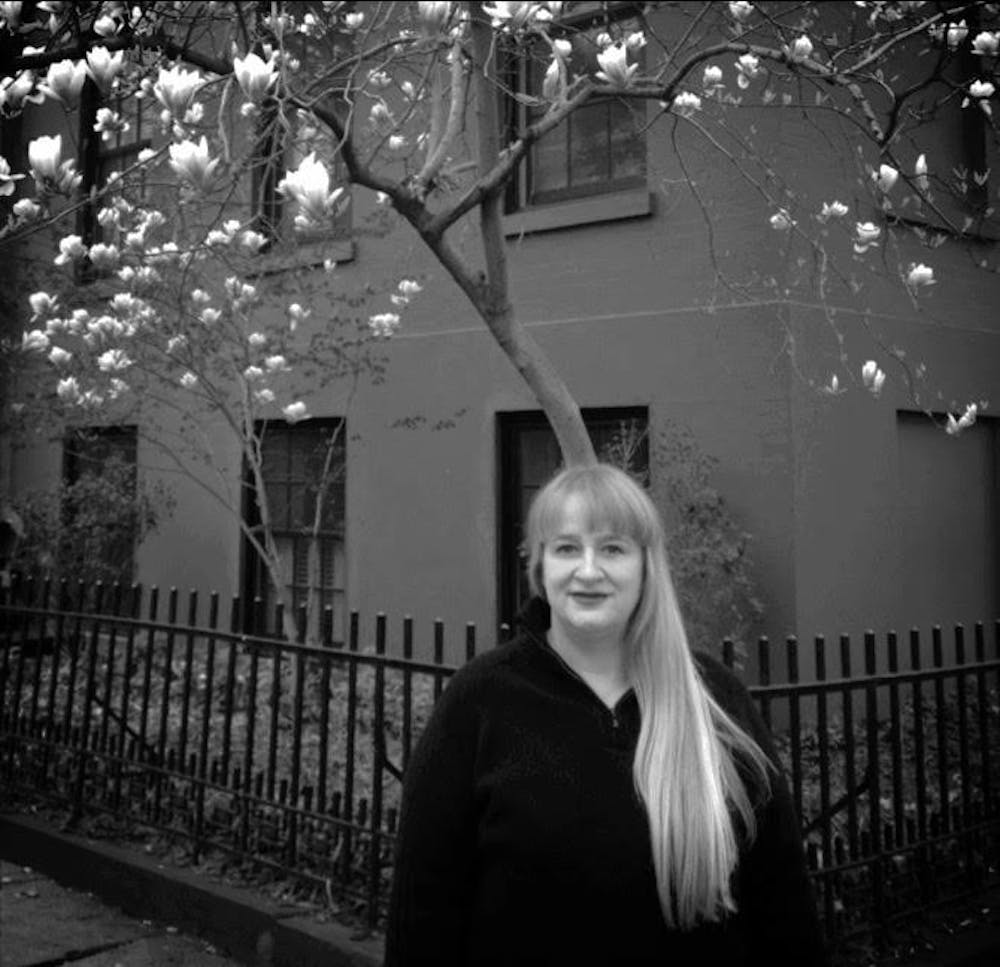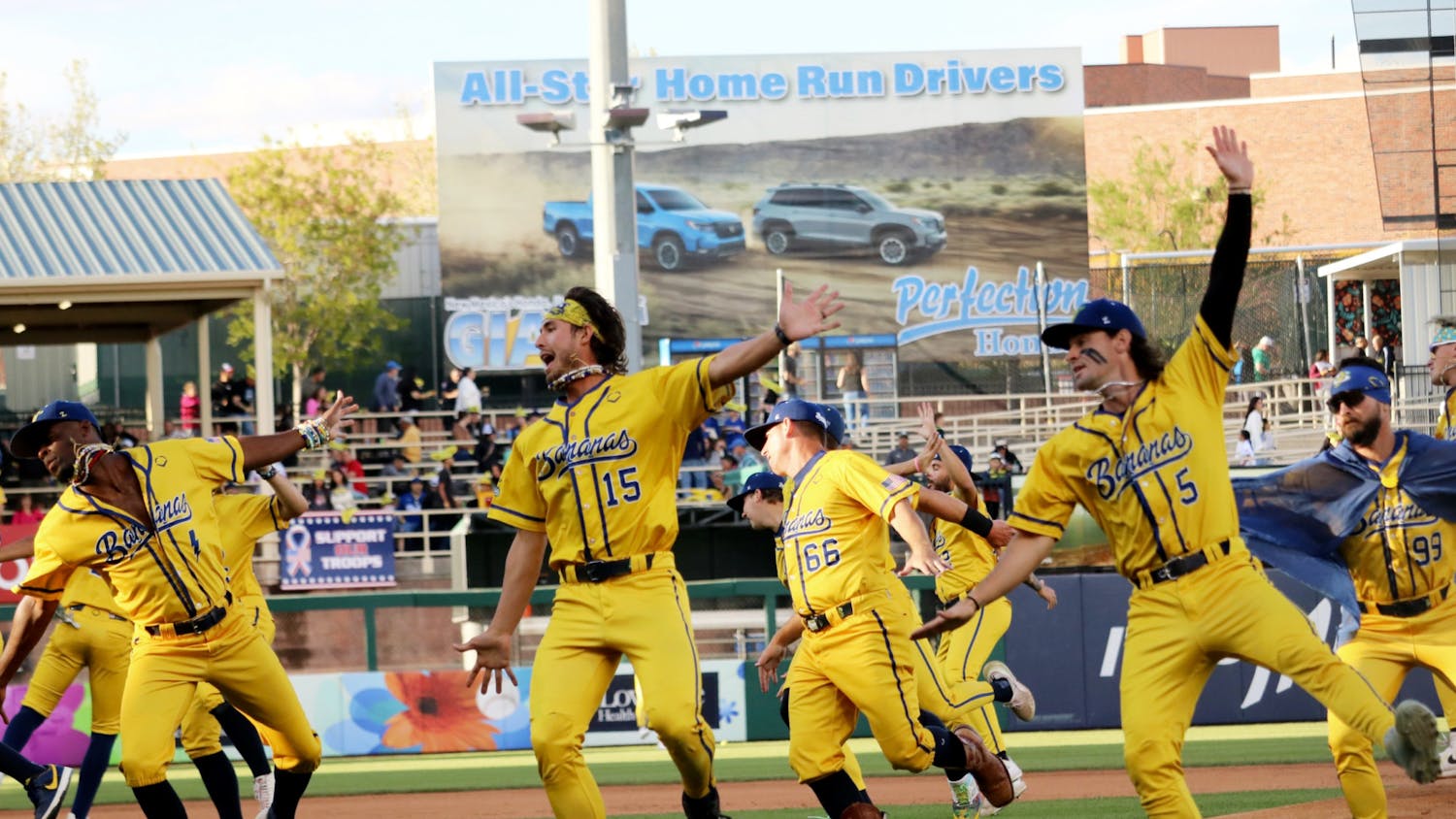Editor’s Note: This is the first in a series of alumni profiles of former Daily Lobo contributors, as part of an effort to connect current readers and contributors to the past and present. Continue to follow the Daily Lobo for more.
Photographer Rikki Reich’s most significant body of work to date is her Sept. 11 portfolio, “The Voice of the Silence,” which is included in the photographic collections in the Library of Congress Photographic Collection, the Smithsonian National Museum of American History and the National Sept. 11 Memorial and Museum.
“The Voice of the Silence” has never been exhibited in its entirety, she said. The work debuted at the AIPAD Photography Show in New York in 2012.
But part of her journey began at the Daily Lobo.
Reich was a staff photographer between 1983 and 1984, she said.
“In those days we went out on assignment, came back to the Lobo offices...processed our film, made contact sheets...then showed them to the photo editor,” she said. “And with some luck and a good day...a photograph or two was selected to run in the next day's Daily Lobo.
“Back then, print versions of the Daily Lobo ran Monday through Friday, so we were always on deadline. We were always in competition with each other regarding whose photograph got published as the lead on the front page. It was how we evaluated our personal progress and success as budding photojournalists.”
Reich recalled her favorite memories at the Daily Lobo.
“I loved working in the darkroom with my fellow photographers...something magic happens locked in the intimacy of a tight, darkroom. The things we talked about, the craft of printing and the magic of photography lay in the the time we spent together,” she said. “This is what was lost with the onset of the Digital Revolution. Instant gratification eliminates the process. The process is where you learn about life, photography and each other but most importantly, it's where you discover your sense of self.”
The Daily Lobo was also a learning experience for Reich.
“I learned to see at the Daily Lobo,” she said. “How to anticipate a shot before it happened. To be invisible. To move faster than anyone else...honing my skills.
“Being a woman helped. In a field riddled with insidious sexism I learned to use my gender as an asset. Female photojournalists are easily dismissed and not taken seriously. I learned to use sexism and my blond hair to my advantage...in that, the more I wasn't taken seriously...the more I downplayed my skills...to be further underestimated. It allowed me to move more freely and not be seen as a threat to the Boy's Club that traditional photojournalism has always been. After all...what could a girl with a camera really do?
Get content from The Daily Lobo delivered to your inbox
“While the guys stood around talking tech and camera equipment, I focused my attention on the history of photography.
“I was a staff photographer at the Daily Lobo...fully engaged in photojournalism while also taking fine art photography studio classes in the Art Department and graduate-level photographic history and independent study courses. During this time I was introduced to the work of Garry Winogrand, Andres Serrano's ‘Piss Christ,’ Nan Goldin's ‘The Ballad of Sexual Dependency,’ Larry Clark's ‘Tulsa’ and Richard Avedon's ‘In the American West.’ I was interested in the intersection of photojournalism, documentary and fine art photography. I didn't want to limit myself or feel closed in by boundaries.
“While at the Daily Lobo, all staff photographers had to attend a mandatory off-campus photojournalism workshop given by Jim Fisher, who went on to become a professor in the Communication Department at the University of Utah in Salt Lake City. It was the crucial turning point. I can state definitively that the Daily Lobo and Jim Fisher's workshop single-handedly prepared me to photograph the frontline of history on the morning of Sept. 11, 2001. Without this training and these combined experiences, the photographs of the ‘The Voice of the Silence’ portfolio would not exist.”
Michelle Delaney, former curator of photography at the National Museum of American History at the Smithsonian, collected photography a year after Sept. 11.
Generally, collecting historic photography happens many years after a historic event, but after Sept. 11, many curators mobilized and attempted to document what happened quickly, she said, adding Congress designated the Smithsonian as an early repository for collecting Sept. 11 objects and artifacts.
Delaney found Reich’s work while searching the Internet for images for the collection.
“Not only was (her work) in a fine art standard, but it was specifically something I hadn’t located previously, which was the marine evacuation in lower Manhattan…It was done in incredibly beautiful black and white photography,” Delaney said.
Delaney collected roughly 25 photographers’ work, including Reich’s, she said.
When it came to Reich’s pieces, Delaney said, “The photographic quality, her perspective and lens on that tragic day when the towers were hit and were coming down, it was something that was different and also work that I knew from getting to know her. (It) was a quality that would fit well within the history of photography section.”
Photo strategist at Dancing Bear W.M. Hunt said he has been a dealer, collector, writer, fundraiser, teacher and “guy on the scene.”
He met Reich through the photo community, Hunt said, adding, “Rikki’s a really good spirit. She likes looking at photographs, and you see her out and about at any number of openings. I appreciate that.”
Reich asked Hunt to make a studio visit for her Sept. 11 work, he said, calling the photographs memorable and saying he felt they were unique, because “she stuck with it, it’s a whole series, so it has a strong time-lapse aspect.”
“Rikki’s a great character,” Hunt said. “She’s not a wilting, shy rose. She’s got stuff to say, and I like that. She’s got spirit. One of the things that is wonderful about her spirit is, it is overwhelmingly positive.”
Delaney echoed this positivity, as she said, “I was very happy that (Rikki Reich) was interested in working with me and interested in donating to the Smithsonian, because that was a labor of love for all of us to work on this, as well as professional duty to work on 9/11. So, Rikki and her willingness to partner with me and talk through her whole concept for...‘The Voice of the Silence,’ and also pain-staking time she spent in the dark room…getting those prints just right, I knew she was serious and long-term for developing her portfolio. It has been great to know her over all these years.”
Delaney encourages aspiring photographers to learn from those who have come before — like Reich — reach out to alums, be unafraid to contact the museum and think about what kind of photography they would like to pursue, calling it both doable and rewarding.
Hunt advises young photographers to “work hard, keep faith and don’t forget to have fun…The fuller the life, the better the photography.”
When asked what she considers some of her greatest accomplishments in photojournalism, Reich said, “Leaving a female perspective of an infamous day in American history that is ‘The Voice of the Silence’ portfolio for future generations. It is my hope that the complete work is exhibited in my lifetime. Women represent 4 percent of art in museum collections. It is time for women to make their collective voices and visions heard. We have viewed the world and historic events through a male-dominated lens for far too long. We must open up the conversation to be more inclusive. We must level the playing field with equal pay for equal work. The time is now.”
Her advice for college students interested in a career in photojournalism?
“Copyright all your photographs as if your life depended upon it. It does,” Reich said.
Elizabeth Sanchez is the editor-in-chief at the Daily Lobo. She can be contacted at editorinchief@dailylobo.com or on Twitter @Beth_A_Sanchez.






